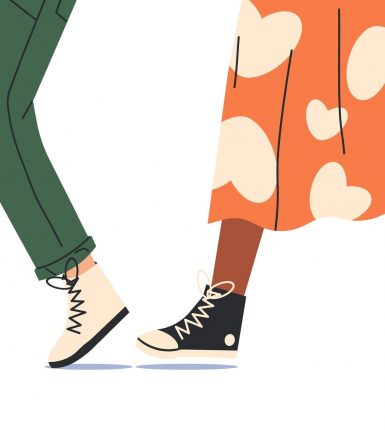Following my manual handling accident in 2008, core stability exercises were prescribed for me by a number of consultants and physiotherapists, and taught to me over an extensive period of time, but did they really do any good? Did they have a significant beneficial effect on my pain either in the short term or long term, or improve my function? Does the research evidence base support the care I received? Could a different physiotherapy approach have worked better for me?
At the outset I would like to say that the below thoughts are not in any way a criticism of the individual physiotherapists that treated me. I have no doubt that they were concerned about me as a patient and were undertaking the care that they had been asked to do by my consultants and/or that they had been trained to do. All were empathetic and supportive and I am sure were working in a way they felt to be in my best interests.
However I do question both the short and long term benefits of prescribing and teaching core stability exercises as a mainstay of physiotherapy treatment for someone with conditions such as mine, low back pain and a damaged sciatic nerve.
Recollections of my physiotherapy (and osteopath) input
I will try and briefly recount the physiotherapy (and osteopath) input I received for my back and sciatic nerve condition in order to illustrate my thoughts around core stability exercise, and give brief examples of input that I feel did work for me.
Following my manual handling accident in 2008, and my initial 5 day stay in hospital, I was referred for immediate physiotherapy as a hospital outpatient. At that time I was in excruciating pain, unable to walk more than a few yards and unable to sit. I remember being taught some core stability exercises at this point however I honestly don’t believe any core stability exercises could have even scratched the surface of the severe pain I was in at the time. I’m sure there were neither any short term or long term improvements in pain or function following from these core stability exercises.
Nearly a year after the accident, I was referred by my GP to the physiotherapy service associated with my GP practice. I was given some advice and taught some fairly gentle core stability exercises. I was compliant with the treatment and fairly conscientious about practicing the exercises between sessions. However the physiotherapist recognised that the core stability exercises were not working for me in terms of pain reduction or improvement in function, in fact they were probably making my situation worse, and they were not continued. I then had a further episode of physiotherapy care, this time from the hospital physiotherapy service, which from memory again included some core exercise work, and some advice on medications.

I underwent back surgery 17 months after the accident, and 9 months following surgery received an episode of care as a hospital outpatient. This was from an osteopath and followed a referral from my spinal surgeons which said ‘we feel that she should have an intensive course of physiotherapy to improve her core stability’ and my rheumatologist who said ‘I have recommended she completes physiotherapy to strengthen core muscles’. This episode of care, undertaken by an osteopath, did include a component of core stability exercises, but also included some general advice and manual therapy. As an integral component of this episode of care I was referred into the hospital’s Back Classes, which were group exercise classes aimed at improving the function of those with back difficulties. These classes also included core stability exercises, together with a range of other exercises.
Overall this was a successful episode of care for me. This therapist discussed with me my concerns about the physical nature of my work, and gave me advice that proved to be profoundly important to me, and for which I will always be grateful. Following these discussions I decided to change my career and become self-employed and this has resulted in very positive long term improvements in my pain condition and ability to enjoy life whilst living with persistent pain. The back classes proved important long-term in acting as a pre-cursor to general exercise, and in particular helped me to have confidence to approach a personal fitness trainer (as it happens with a physiotherapy training background) and embark on a carefully guided more strenuous exercise programme, which I started a few months ago.
I can’t say for sure whether the core stability exercises I undertook in this episode of care relieved my pain in any way at all at the time, but there is no doubt in my mind that they have had no long term effect whatsoever (happy to be proved clinically wrong!).
After this episode of care I was put onto a spinal cord stimulator assessment pathway by my rheumatologist, and whilst going through that very lengthy assessment process I received another episode of care from an extended scope physiotherapist, Matt Low. My rheumatologist wrote to me saying ‘As you continue to have some back pain it could be worth seeing one of our experienced physiotherapists to see if there is any advice on postures or exercises that relieve your symptoms a little and I will ask Matthew to see you to see if he has any ideas about relieving strain and stretch on the nerve’.
This resultant episode of care took place just over 4 years after the accident. Matt’s approach was entirely different to the other physiotherapists and did not involve any core stability exercises. He concentrated on improving my functional abilities, minimising my maladaptive compensation methods, improving my understanding of my condition, and teaching me pain management. I believe this episode of care followed a Cognitive Functional Approach, and it was this episode of care that effectively changed my life. I wish I had been given this much input earlier. I have written a blog about this episode of care which can be accessed by clicking *HERE*.
As part of the spinal cord stimulator assessment process I had to be assessed by a multi-disciplinary team in a neighbouring hospital. This involved a spinal surgeon, a rheumatologist and a psychiatrist specialising in pain. The outcome of this assessment was that the spinal cord stimulator process should be paused and I should be assessed for possible spinal fusion, seen by an OT, and time given for core stability exercises to be implemented! The letter I received said ‘My recommendations were that she does start on some home core stability exercises…’
Thankfully I was still being seen by Matt Low and my own rheumatologist who, with the advice of a different spinal surgeon and some specialist x-rays, decided that spinal fusion was not appropriate and bounced back the idea of core stability exercises. My rheumatologist wrote ‘The prescription of core stability work has been discussed with her Physiotherapist Matt Low, who feels that this is not the strategy that will work in her circumstances. He is concerned that there is a real possibility that it may make her neuropathic pain in her right leg worse.’
Looking back, and from all my personal experience of core stability exercises, and from my extensive reading of the subject, I really don’t believe that core stability exercises were ever going to have anything but a minimal, very short term impact on my pain, and that was at best, and yes could have made my nerve pain situation worse. I am yet to understand how it could be thought that core stability exercises were going to improve my pain enough such that I didn’t need a spinal cord stimulator!
Being a patient in a situation where there is disagreement between treating physicians is difficult, especially when you are in significant and persistent pain and therefore likely to leap at any lifelines/ideas you are offered. A year or so later I decided I needed to find out for myself whether doing core stability exercises could significantly improve my pain situation or not, and so I paid for a private physiotherapist to do some work with me. He taught me a range of core stability exercises, which I duly followed, but they made my pain situation worse, and had no long term benefit. He also worked with me on the use of crutches to improve my pain levels when standing still and when walking reasonably long distances (for me), which I was very grateful for.
Personal fitness trainer

A few months ago I decided to join a local gym and pay weekly for a personal fitness trainer. I found a good personal fitness trainer with previous physiotherapy training. He pushes me quite hard, but is sensitive to my pain condition and alters exercises dynamically to make them appropriate for me. He also physically catches me when necessary as my balance has been affected! I trust him, which I think is hugely important. I attend the gym every day where possible (probably on average 5 days out of 7) and work for around an hour, so I would describe this is an extensive, carefully guided exercise programme. My personal fitness trainer has taught me a range of exercises, concentrating mainly on strength, balance and core exercises.
There is no doubt that my ability within the gym has improved since starting, however I’m not sure I’m seeing great impact on my functional ability outside of the gym yet. I’m getting stronger but my daily functional ability remains limited by pain. I had hoped that doing an extensive and fairly intensive guided and supervised exercise programme would help my condition and that I would see an improvement in pain levels, however four months in that is not yet proving to be the case. If anything I would say that my pain levels have overall increased and I assume this is because I am irritating the sciatic nerve and my back whilst exercising which is feeding into the wind-up process of pain.
In particular, I don’t think the core exercises component of my work in the gym have shown either a short term or long term improvement in pain or function. I remain convinced that improving my strength, balance and general fitness are important in terms of my general health and wellbeing, especially as my pain condition had inevitably led to me becoming somewhat deconditioned, but I have to accept that it is not going to be a magic cure for pain. If core exercises were going to improve my pain condition and function significantly then I would have expected this to have happened by now, and it hasn’t.
Research and opinion
There has been a lot of research undertaken into the efficacy of core stability exercises for low back pain, including comparisons of core stability exercises and other exercise programmes. At the end of this blog I list links to some of this research, together with brief conclusions. Summarising the outcomes of this research from a lay persons point of view, there seems to be evidence to show core stability exercises improve pain and disability in the short term, but less so in the long term, and there seems little difference between core stability exercises and other exercises in their overall efficacy. (I have a feeling some serious research scientists may disagree and take issue with this sweeping lay person summary, but this is my personal overall reading of the situation.)
Ben Cormack has written a very interesting and informative blog which considers what the evidence tells us is the best exercise for back pain, which is well worth reading and can be accessed by clicking HERE. Ben is a musculoskeletal therapist with a clinical background in sports therapy, rehabilitation, pain science & exercise stretching back 15 years.
My thoughts
If I could wind the clock back then I would have asked my treating physiotherapists not to have spent so much valuable therapy time undertaking core stability exercise work, but to ideally have used a Cognitive Functional Therapy type of approach with me from the beginning. I don’t believe core stability exercises worked for me either in the short term, or the long term. I would go so far as to suggest they were probably pretty much a waste of time for me. (I’m sure some physiotherapists might argue with this – but I don’t have the medical expertise and specific training to be able to scientifically say whether they have improved my core or not, all I can tell you is that they appear to have had no effect on either my pain levels or function in the short or long term, and that is what is important to me.)
It is easy to be critical in hindsight, and I know I was in severe pain and difficulty for some of my physio sessions (particularly during the first episode of care) which must have meant doing anything with me at all would have been difficult, but I could have been taught many of the things that physiotherapist Matt Low taught me 4 years after the accident much earlier, which would have surely improved my outcomes and quality of life.
In summary, I would ask physiotherapists, referring consultants and GPs to consider the research and evidence base for core stability exercises, and not see core stability exercises as a panacea for physiotherapy support, but to consider whether there are other methods of physiotherapy that are more efficaceous and beneficial to the particular individual they are working with.
I’ll let you know next year if twelve months worth of working on core exercises with my personal fitness trainer (as well as strength and balance exercises) means that I change my mind about this!
Tina
@livingwellpain
www.livingwellpain.net











Hi Tina. Oh dear. Your story is so familiar. As a physiotherapist and someone who suffered years of back pain I have learnt that the first thing you have to do is listen to the patient and treat their pain first. I do teach ‘core’ e revised but only as a part of a whole treatment plan. Also they are only the beginning of moving you forward to more functional exercise. Good luck for further improvement. It took me years but I got there in the end. Best wishes.
Hi Laura
Yes, sadly a familiar story I’m sure. Sorry to hear you’ve suffered too, but glad to hear you are much improved.
Thank you for your best wishes.
Tina